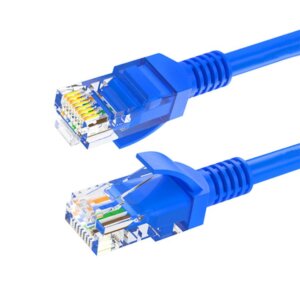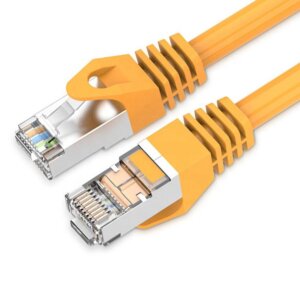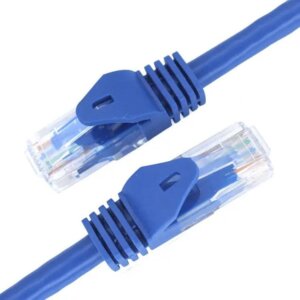A patch cable is a short cable used to connect electronic or optical devices to a network. It is typically used to connect:
1. Computers to network switches or routers
2. Patch panels to network switches
3. Telecommunications equipment
Patch cables are designed for flexibility and ease of use in network setups, allowing for quick and efficient connections in data centers and office environments. They are available in various types, such as Ethernet, fiber optic, and coaxial, depending on the application.

What is the difference between a patch lead and an Ethernet cable?
A patch lead is a specific type of Ethernet cable designed for short, flexible connections, such as linking devices to a patch panel, switch, or router. It typically features stranded conductors to enhance flexibility, making it ideal for environments where cables need to be moved frequently. In contrast, "Ethernet cable" is a broader term encompassing any cable used within an Ethernet network, including various categories like Cat5e, Cat6, and Cat6a, and can be used for both permanent and temporary connections. Essentially, all patch leads are Ethernet cables, but not all Ethernet cables are patch leads.
What is also called a patch cable?
A patch cable is also known as a patch cord or patch lead. It is typically used for short-distance connections between network devices, such as linking a computer to a switch, router, or patch panel. These cables are designed for flexibility, making them ideal for environments where cables need frequent adjustments or reconfigurations. Patch cables can come in various types, including Ethernet, fiber optic, or audio, depending on the specific application and requirements.
Are patch cables solid or stranded?

Patch cables are typically made with stranded conductors. Stranded cables are more flexible than solid ones, making them ideal for short-distance connections where cables may need to be frequently moved or adjusted, such as in patch panels or between network devices.
How many types of patch cable are there?
Patch cables come in various types, depending on their application and the medium they use. Here are some common types:
1. Ethernet Patch Cables: Used for networking, available in categories like Cat5E, Cat6, Cat6A, and Cat7, each supporting different speeds and bandwidths.
2. Fiber Optic Patch Cables: Used for high-speed data transmission, available in single-mode and multi-mode variants.
3. Audio Patch Cables: Used for connecting audio equipment, such as instruments, mixers, and amplifiers.
4. Coaxial Patch Cables: Used for video and RF signal connections, often found in TV and radio setups.
5. HDMI Patch Cables: Used for transmitting audio and video signals between devices like TVs, monitors, and gaming consoles.
Each type is designed for specific uses and environments.
How to choose a Ethernet patch cable?
Choosing an Ethernet patch cable involves considering several factors:
Category:
- Cat5E: Suitable for speeds up to 1 Gbps.
- Cat6: Supports speeds up to 10 Gbps over shorter distances (up to 55 meters).
- Cat6A: Enhanced version of Cat6, supports 10 Gbps over longer distances (up to 100 meters).
- Cat7/Cat8: Higher performance, supports even faster speeds and is more suitable for data centers.
Length: Choose a cable length that fits your setup without excessive slack, which can cause clutter.
Shielding:
- Unshielded Twisted Pair (UTP): Common for most home and office environments.
- Foiled Twisted Pair (FTP): Provides protection against electromagnetic interference with a foil shield around the twisted pairs, suitable for moderately noisy environments.
- Shielded Twisted Pair (STP): Offers better protection with additional shielding, useful in environments with high interference.
Connector Type: Ensure the cable has RJ45 connectors, which are standard for Ethernet connections.
Flexibility: Stranded cables are more flexible and suitable for patch cables, while solid cables are better for longer, permanent installations.
Environment: Consider whether the cable will be used indoors or outdoors, as outdoor cables need to be more durable and weather-resistant.
Budget: Higher-category cables are generally more expensive, so balance your needs with your budget.
By considering these factors, you can choose a cable that meets your performance and environmental needs.

Contact Our Team to get the latest price list within 24Hours